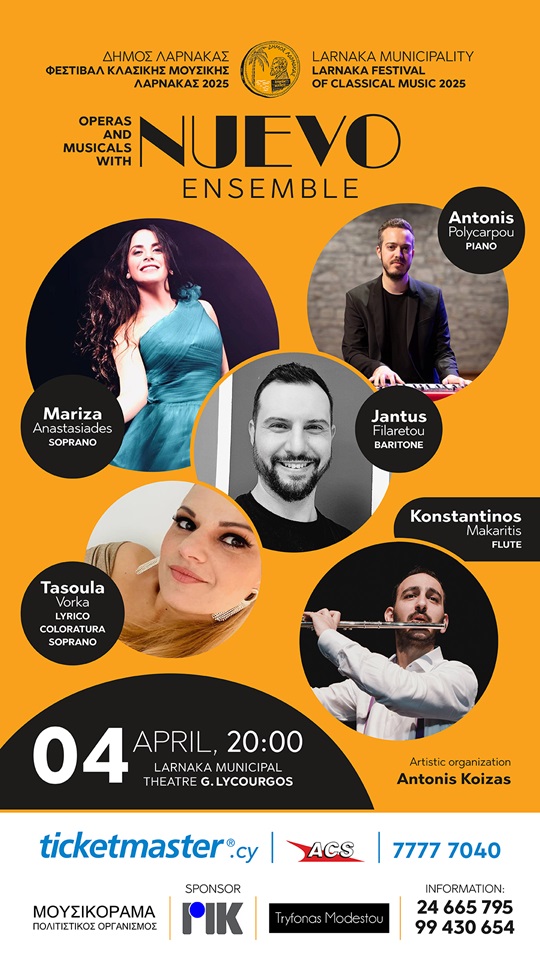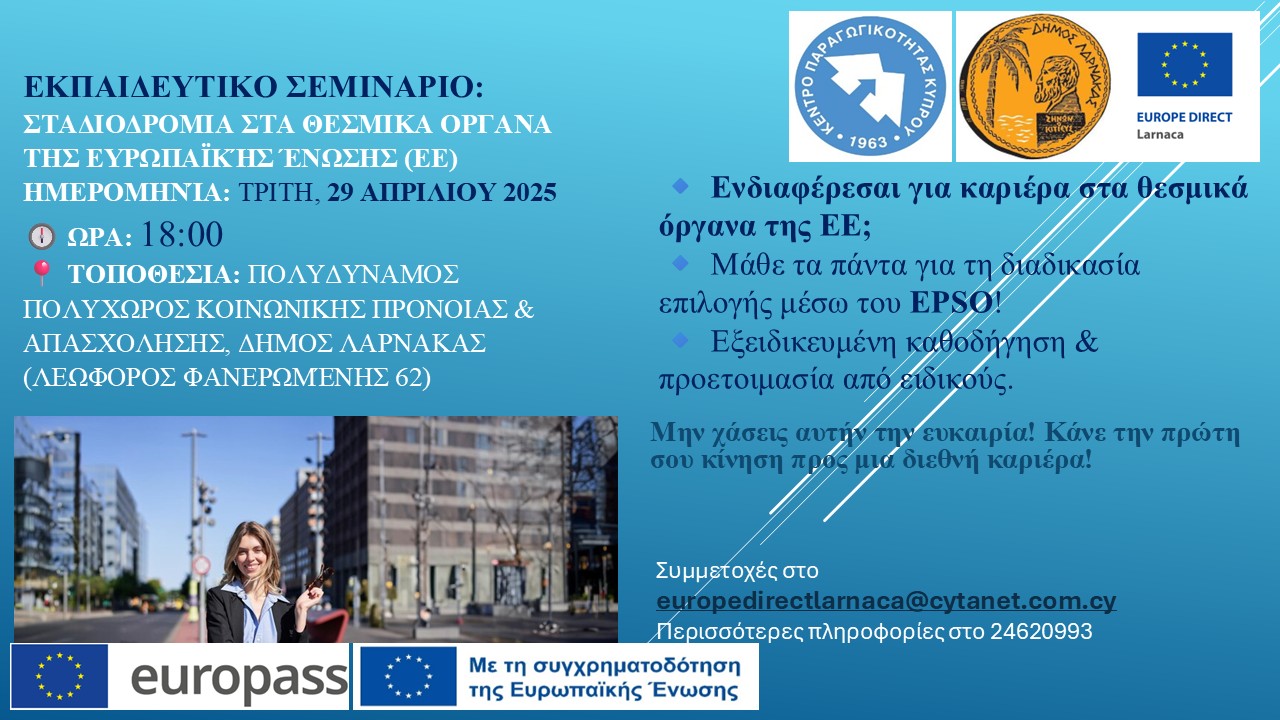By Dr Zannetos Tofallis
This year Greek Easter is celebrated on the 16 th April, one week after the Latin Easter. The
Greeks throughout the world are celebrating Easter which is considered to be the most
important religious festival in Greece and Cyprus. It symbolizes the victory of life over death,
of light over darkness. For us Greeks, it symbolises the coming of Spring, and especially the
triumph of freedom over slavery and barbarism. May we take this opportunity of
wishing you a very HAPPY EASTER and every happiness in Life!
This is a short introduction (especially dedicated to our young compatriots and our English
speaking friends) of how the Greeks celebrate Easter. It starts from the Sunday of Lent – 40
days before Easter – leading to the triumphant Anastasis or Resurrection of Christ from the
dead.
Let us follow the traditional steps of preparations of the celebrations based on history and
tradition:
The Sundays of Lent:
The First Sunday of Lent – The First Sunday in Lent is called Orthodoxy Sunday because on
this day each year is celebrated the Feast in honour of the restoration of the use of icons, or
holy pictures, in the Church. This Feast was first celebrated on March 11, 843, when after
more than a century of controversy the Byzantine Empress Theodora finally brought about a
restoration of the icons. The First Sunday of Lent has been kept as an anniversary of
Orthodoxy ever since that time, because those who had wished to do away with the pictures
were also desirous of modifying the Orthodox Faith; the icons were and are a symbol of the
Orthodox Faith, and no Orthodox Church is without them.
The Second Sunday of Lent – The Second Sunday of Lent commemorates St. Gregory
Palamas, a monk of Mt. Athos, who about 1350 became Archbishop of Salonika in Greece.
St. Gregory was a famous ascetic who developed a system of mystical contemplation aimed at
promoting union with God. His ideas found favour among the Eastern monks, and in 1368,
eight years after his death, he was declared a Saint by the Patriarch of Constantinople,
Philotheos, who had convened a Council to consider his life and works. From that time to
the present, he has been remembered every year on the Second Sunday of Lent.
The Third Sunday of Lent – The Third Sunday of Lent marks the middle of the Lenten period.
This day is dedicated to the Holy Cross, and the ceremonial of the day is similar to that of
Holy Cross Day, September 14. At the end of the Liturgy, the Cross is carried in the
procession on a tray of flowers, and placed on a table in the centre of the Church. The Priest
stands before the table and raises the Cross aloft, praying for the welfare of all Orthodox
Christians. He circles the table, stopping at each side and raising and lowering the Cross, and
praying in turn for the President of the Country and other civil authorities, for the Armed
Forces, for the Archbishop, and for all Orthodox clergy. After the prayers the blessed
flowers are distributed to the people, in token of the refreshing beauty and strength which
comes from the Cross of Christ, and to encourage them in the midst of the Lenten fast.
The Fourth Sunday of Lent – The Fourth Sunday of Lent celebrates the memory of the famous
Saint and ascetic, St. John of the Ladder, who was head of the monastery located on Mt.
Sinai, where he died in 605 A.D. St. John got his name from a famous book of spiritual
exercises which he wrote and entitled “The Ladder of Perfection,” and which he intended to
serve as a means of climbing spiritually from earth to heaven. St. John’s regular Feast Day
falls on March 30; his commemoration on the Fourth Sunday of Lent as well, probably had its
origin in the fact that his book of spiritual directions was read in the monasteries during the
Lenten period, and that he was regarded as one of the greatest monastic ascetics.
Thursday of the Fifth Week of Lent – The Chief feature of the Morning Services prescribed
for the Thursday of the Fifth Week of Lent, is the Great Canon of St. Andrew of Crete. When
performed in parish churches, this Service is done on Wednesday evening, and is usually
much abridged because of its extreme length. The Canon itself is made up of more than two
hundred and fifty hymns, all penitential in character. It was highly regarded for the learned
symbolism with which it abounds, and for its poetic form. St. Andrew of Crete is credited
with the invention of the Canon form of hymn composition. St. Andrew of Crete was
Archbishop of the island during the eighth century. After a career in the great church of
Constantinople, where he became famous for building orphan asylums and taking care of the
poor, he was selected as Archbishop of Gortynia.
He administered his diocese with vigour and was very zealous for the welfare of his people,
who suffered not only from famine and plague, but from the visits of Arab marauders as well.
He died on July 4, possibly in 740 A.D., while returning home from Constantinople where
he had gone to interest the Court in the plight of the Cretans. St. Andrew is one of the most
famous of the Byzantine orators and hymnographers Besides the Great Canon, he wrote
several others for penitential year, and numerous individual hymns as well. His feast day is
July 4, the anniversary of his death.
Saturday of the Fifth Week of Lent – The Service prescribed for the Saturday of the Fifth
Week of Lent is that of the Akathistos Hymn, a devotion in honour of the Blessed Virgin
Mary. This Service consists of the recitation of Little Compline, which is combined a series
of special hymns in honour of Mary. Present custom is to hold the service on each of the first
five Friday evenings of Lent. The Akathistos Hymn itself is divided up into four parts, and
on each of the first four Friday evenings a successive part is sung, and on the fifth Friday
evening the whole hymn is performed. The Akathistos Hymn was composed as an offering
of thanksgiving to the Blessed Virgin in the year 626 A.D. In that year the Persians and
Avars attacked the city of Constantinople and besieged it. The Patriarch Sergius led the
despairing people in a great procession around the walls of the city, singing and bearing with
them icons of the Lord and His Mother. Strengthened, their devotion on, and aided by a
tempest which sprang up and wrecked many ships of the fleet drawn up before the city, the
inhabitants sallied forth and put the invaders to flight. They considered their deliverance all
the more miraculous because the Emperor Heraclius was absent on a campaign with the major
part of his army. In thanksgiving the people gathered in the great Church of the Holy
Wisdom, and stood the whole night through singing hymns of praise and thanksgiving. The
word “Akathistos” means “not sitting» and it is still customary for the congregation to stand
while the stanzas of the hymn are being sung. The Akathistos Hymn is one of the great
devotional compositions of Christian hymnography and has been translated into many
languages. It is often used a Service of Intercession to the Blessed Virgin, and is sung in all
Greek Orthodox Churches during Lent.
The Fifth Sunday of Lent – On the Fifth Sunday of Lent is commemorated St. Mary of Egypt,
one of the most famous women penitents of Christian history. Her story is told in the
Menaion, on April 1, her Feast Day. She is called to remembrance on the Fifth Sunday of
Lent as well, not only because of her ascetic life, but in order that the example of her
repentance may have a salutary effect on the faithful, and urge them to similar sincere
repentance of their misdoings.
Before Holy Week begins, we celebrate the Saturday of Lazarus. This commemorates the
miracle of Lazarus’s resurrection by Christ. This miracle was performed as a preview to His
own resurrection which is commemorated on the following Sunday. The Sunday after the
Saturday of Lazarus, we celebrate Palm Sunday when Christ entered Jerusalem. Immediately
following the Divine Liturgy, the priest hands out crosses made out of palms. We put these crosses in our cars or anywhere else we feel we want to be protected. The traditional food for
this day is fish, just like the following poem states:
Βάγια, βάγια των βαγιών
τρώμε ψάρι και κολιό
και την άλλη Κυριακή
τρώμε το ψητό τ΄αρνι
Palms, palms on Palm Sunday
we eat fish and mackerel
and the following Sunday
we eat the roasted lamb!
Holy Week is a period of mourning as we commemorate the Passion of Jesus Christ.
Entertainment is not allowed for the whole week. The Church has services every night
during this week, and each Service re-enacts the events leading to Easter Sunday. Fasting is
strict during this week especially on Good Friday.
Church Services during Holy Week:
On Sunday night and on Holy Monday night is the service for Christ the Bridegroom. The
church (faithful) is symbolically the bride and Christ is the groom. Like the bride and groom,
the church must prepare to unite with Christ, the bridegroom, for all eternity.
On Holy Tuesday night we commemorate the anointing of Christ with myrrh by a sinful
woman who wet his feet and dried them with her hair. Christ forgave her for her sins as an
example to us on how to repent and be saved. The “Kassiani” hymn is sung at this service to
honour this woman.
Holy Wednesday morning is the Liturgy of the Presanctified Gifts (Proigiasmeni). The same
day, in the evening or night, the church offers the Sacrament of Holy Unction. During this
service, the priest reads seven gospels, and seven blessings to bless the oil which will be used
to heal the ailments of the body and soul. At the end of the service, the priest anoints each
parishioner with the oil by making the sign of the cross on their forehead, cheeks, chin and
hands.
On Holy Thursday morning, the Liturgy of St. Basil the Great is performed. Many receive
Holy Communion that morning. Red eggs are dyed on this day. The colour red symbolizes
the blood of Christ which He shed for us on the Cross. During the evening service, the priest
reads 12 Gospels that tell all of Christ’s suffering that led to his Crucifixion. After each
Gospel reading, a candle is lit. After the fifth Gospel is read, the Holy Cross is taken out of
the Altar and carried in a procession around the church and then placed in the centre at the
front of the church, where parishioners come forth and kiss the body or feet of Christ. After
the Service, women decorate the Epitaphio (funeral bier).
Holy Friday morning is the Service for the reading of the Holy Hours. In the afternoon the
service for the Descent from the Holy Cross (Apokathilosis) is held, where the priests takes
the body of Christ from the Cross and places it in the Epitaphio (funeral bier). After the
Apokathilosis, the faithful come forth and kiss the Epitaphio while the young children
walk/crawl under it three times. In Greece, the faithful go from Church to Church to kiss the
different Epitaphioi. At night is the Matins of Lamentation (Epitaphios). The Epitaphios is
lifted and taken outside the church in a procession. In Greece they take the Epitaphio in a
procession through the whole village or town and all the churches meet and continue on
together from there. When the Epitaphio returns to the Church, each parishioner enters the
church by passing under the Epitaphio. Another Greek tradition for Good Friday is to drink
vinegar just as Jesus was given vinegar when he said that he was thirsty.
Holy Saturday morning is the Liturgy of St. Basil the Great. At night the Service of the
Resurrection (Anastasi) is held. It is customary for the godmother or godfather to buy an
Easter candle for their godchild. Everyone dresses up in their new outfits and go to Church.
A little before midnight, all the lights in the Church are turned off. As soon as midnight
strikes the priest sings “Defte Lavete Fos”, which translates to “Come, receive the light”. At
that point he comes out of the Altar with a lit candle and gives the light to the whole
congregation (one member passes is to the next). Then, all the Clergy and parishioners exit
the church. Once outside, the priest reads the Gospel of the Anastasi and as soon as he is
done everyone sings while making the sign of the cross with their candles:
“Χριστός Ανέστη εκ νεκρών
Θανάτω, θάνατον πατήσας
Και τοις εν τοις μνήμασι
Ζωήν χαρισάμενος”
(Christ has risen from the dead,
trampling down death by death
and granted life
to those in tombs)
In Greece, as soon as the “Christos Anesti” is sung, fireworks are heard throughout. At this
point, the majority of the congregation leaves church although the Liturgy of St. John the
Chrysostom follows. Everyone greets each other with Χριστός Ανέστη “Christos Anesti”
(Christ has risen) and respond Αληθώς Ανέστη “Alithos Anesti” (Truly he has risen”). The
faithful take their lit candles home and before entering the house, they make the sign of the
cross above the entryway with the smoke from the candle. Then they light the kantili and try
to preserve that light for at least three days. Some keep it for as much as forty days. That
night, everyone eats the traditional Anastasi meal which consists of mayeritsa (soup made
with lamb intestines), tsoureki (sweet bread), koulourakia, red Easter eggs, etc. Another
tradition is to bump eggs and see whose breaks first. On the island of Kos, they also eat
“lambropittes” which are basically cheese pies. They make the dough which they place in a
round baking pan and fill it with a cheese and egg mixture. Then they brush the top with egg
before baking.
On Easter Sunday in many parts of Greece it is traditional to roast a lamb and also the
kokorestsi. The roasted lamb symbolizes Jesus who sacrificed himself for our sake.
There is an afternoon Church Service on Easter Sunday. It is referred to as Great Vespers of
Agape. During this Service, the Gospel is read in all different languages.
For forty days following the Anastasi, the Greeks greet each other with “Χριστός Ανέστη –
Christos Anesti” and “Αληθώς Ανέστη – Alithos Anesti”.
We wish you Καλό Πάσχα (Happy Easter), Peace and Happiness!
Zannetos Tofallis
(ztofallis@gmail,com)
London, April 2023






